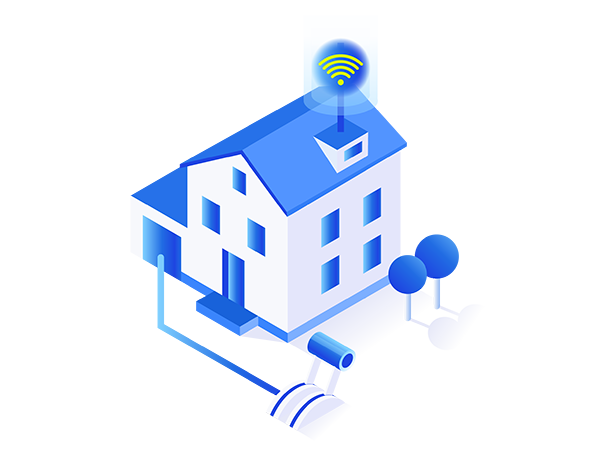Full Fibre BroadbandWhy full fibre matters when it comes to broadband |

Not all “fibre” is created equal
You’ve probably heard about the “fibre” service lots of broadband providers now claim to offer. But beware – some providers’ fibre service actually stops at the street cabinet, which means it’s copper phone lines the rest of the way.
This is called fibre-to-the-cabinet (FTTC) and, depending on how far you live from the cabinet, it can cause frustrating drops in service – majorly impacting your broadband experience.

Full fibre vs standard broadband
Traditionally, standard broadband (known as ADSL) is delivered using existing copper phone lines, which can cause frustrating drops in service and is generally much slower. Average speeds can be around 10-11Mbps, depending on the provider.
Fibre is much faster. Full fibre even more so! If you’re looking for the best speed and reliability, full fibre is the obvious choice.
The real deal
We only deal in full fibre broadband, which means we bring that fibre goodness all the way to your building. Our built-for-purpose network bypasses those street cabinets, so you get the full speed and power from the exchange.
It’s called fibre-to-the-premises (FTTP) or fibre-to-the-building (FTTB) and, when it comes to fast, reliable broadband, our connection is king.

Advantages of full fibre
It all depends on how fast you decide to go, but with a 1Gb full fibre connection (average speed 900Mbps), you could:

Download a TV episode in 20 seconds

Download an entire film in 45 seconds

Upload 100 high-res photos in less than 3 seconds
Don’t know your Mbps from your Gb? We’ve got you covered.
Hyperfast, not hyperexpensive
The benefits of full fibre speak for themselves – and it costs less than you’d think. In fact, switching to full fibre can actually save you money.
With monthly rolling options and Broadband Only or Broadband & Phone packages, you can tailor your Hyperoptic service to suit your needs – and your budget.

The full fibre future
As our network continues to grow, more and more people are waking up to the importance (and brilliance) of a full fibre connection.
With more buildings having access to full fibre, fast, reliable internet is becoming a utility. And now, going full fibre has never been more cost-effective or easy.

Don’t get left behind
Most popular FAQs
What is fibre in broadband?
Fibre broadband is broadband delivered using fibre optic cabling, which allows data to travel much faster than traditional methods. And that means a hyperfast connection!
Fibre cabling is also immune to electromagnetic interference, which means it’s mega reliable. In fact, according to Ofcom, fibre is the UK’s most reliable broadband technology – so you know you’re in good hands.
Do you need a router with full fibre?
Yes, you’ll need a router to connect to your full fibre broadband service.
We call our routers Hyperhubs and they come as standard with any of our packages. These are optimised for our network and our engineer will most likely set yours up for you during your Hyperoptic install (if you need one). Alternatively, if you’re setting it up yourself, you’ll find everything you need to know here Help with your Router.
What is the difference between fibre and full fibre?
Fibre broadband is better than traditional broadband. But there are different types of fibre broadband – and they are not all created equal.
Some of the “fibre” services broadband providers offer only go as far as the street cabinet, which means your quality of service could differ massively, depending on how far away your property is from the cabinet. This is called fibre-to-the-cabinet (FTTC) but can also be referred to generically as “fibre”, so watch out!
Hyperoptic doesn’t do FTTC. Instead, we provide “full fibre” (also known as fibre-to-the-building/fibre-to-the-premise/FTTB/FTTP), which means our fibre goes all the way to your building and bypasses the street cabinets completely. This means a faster, more reliable connection than FTTC fibre.
So, fibre is good. But full fibre is even better.
Is it worth getting full fibre?
There may be a perception that full fibre is more expensive than other broadband services – but this is often untrue. Especially if you consider the massive mid-contract price hikes than many providers hit their customers with each year (psst! Hyperoptic don’t do those).
The fact is, if you’re lucky enough to be able to get full fibre where you live, you can likely get connected for a similar (if not cheaper) price than regular fibre. And if speed, reliability and value are important to you, then full fibre is definitely worth getting.




